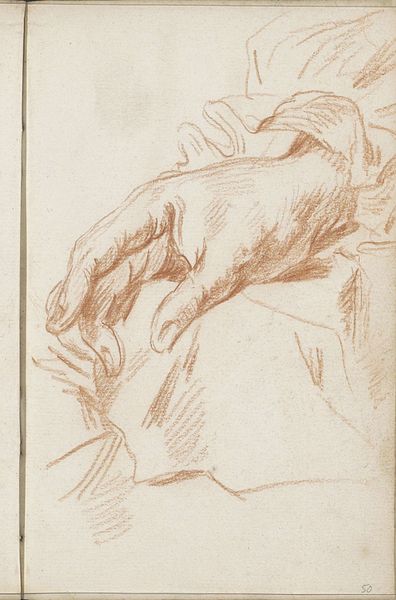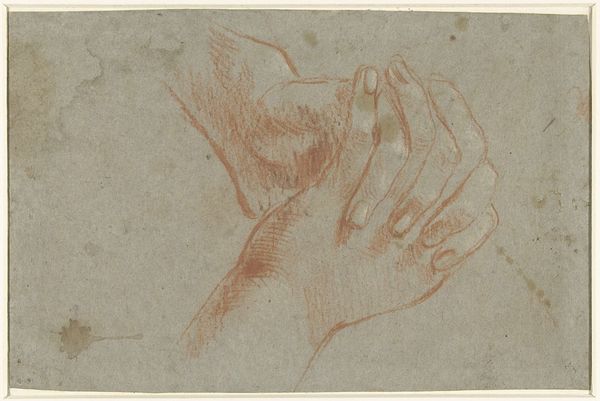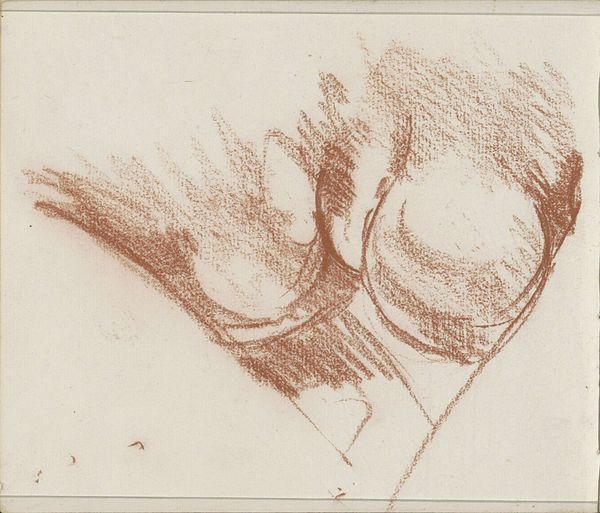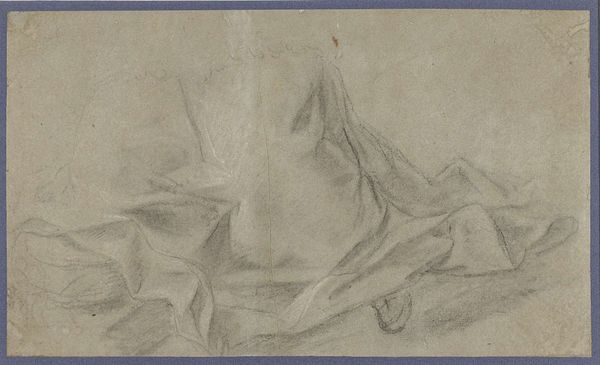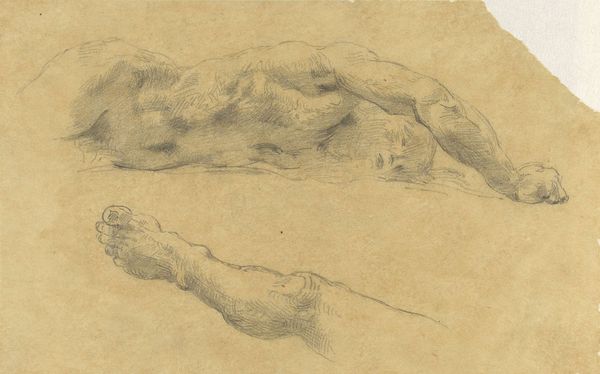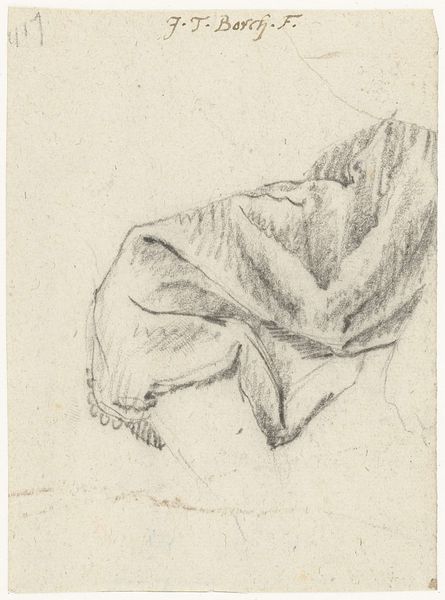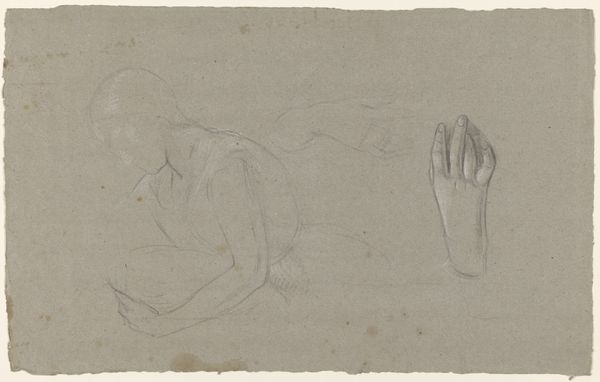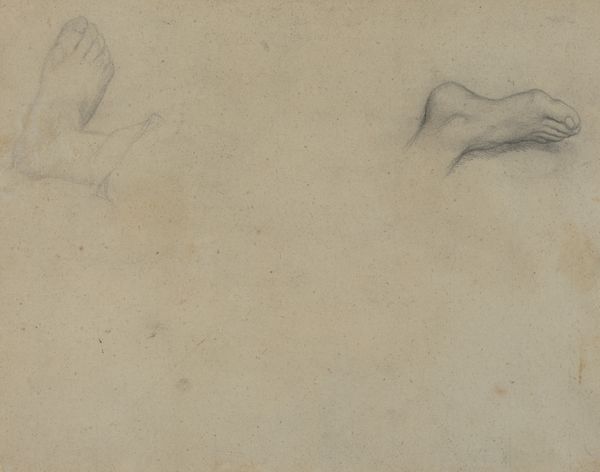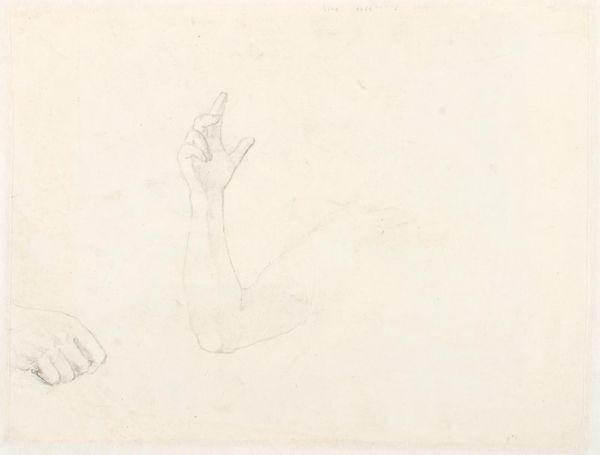
drawing, paper, pencil
#
portrait
#
pencil drawn
#
drawing
#
pencil sketch
#
figuration
#
paper
#
pencil
Copyright: Rijks Museum: Open Domain
Curator: Welcome. We're looking at "Mouw," a pencil drawing on paper by Petrus Johannes van Reysschoot, dating from 1710 to 1772. It seems to be a quick sketch, almost unfinished in its execution. Editor: Yes, an interesting juxtaposition on the page. The vacant space really makes the figure look isolated and self-contained. There's something mournful about the slumped form, a cloaked or shrouded figure with what looks like the weight of the world on their shoulders. The figure and lack thereof, invite reflection. Curator: Notice the artist's technique, the cross-hatching to build volume, the varying pressure of the pencil strokes. This indicates an intention not simply to document but to really model light and shadow. See how he concentrates his marks in the sleeves of the subject to generate tonal density and suggest three-dimensionality. Editor: Indeed. But what does it cloak? Is this anonymous figure indicative of the societal roles enforced, where personhood is literally shrouded in cloth, thereby invisible. Consider how mourning traditions throughout Europe often involve veiling. Are they grieving or, even more broadly, resigned? Curator: That is reading into the implications a little bit far... From a formal standpoint, you can see the drawing's simplicity allows van Reysschoot to prioritize pure form and the essence of figuration. The contour lines themselves become active elements. Editor: True. Even those hesitant lines carry cultural weight and contribute to the overall aura of… oppression, I think? One wonders what purpose this sketch had for the artist—perhaps a preliminary study for a larger, more politically engaged piece. Curator: Whether preparatory or a piece on its own, van Reysschoot showcases how economical mark-making can express weight, dimension and feeling using only pencil on paper. The reduction in this image makes the technique even more potent. Editor: And even through reduction it still has power to act as a mirror reflecting not only an image but also questioning expectations surrounding concealment, identity, and societal expectations. It prompts us to consider who gets seen, who remains hidden. Curator: A drawing indeed evoking powerful questions, and visually striking in its spare simplicity. Editor: It's been insightful considering together this powerful work and pondering these vital questions it brings up today.
Comments
No comments
Be the first to comment and join the conversation on the ultimate creative platform.

